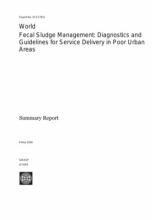Land Library
Welcome to the Land Portal Library. Explore our vast collection of open-access resources (over 74,000) including reports, journal articles, research papers, peer-reviewed publications, legal documents, videos and much more.
/ library resources
Showing items 1 through 9 of 50.With the current population of 40 million and 213 inhabitants per km², Uganda is one of the most densely populated countries in Africa. Yet land is a fixed asset.
รายละเอียด : " คู่มือทำไม้ให้ถูกต้องตามกฎหมาย" ที่ได้รับการสนับสนุนจากองค์การอาหารและการเกษตรแห่งสหประชาชาติ (Food and Agriculture Organization-FAO) เป็นคู่มือที่รวบรวมกฏหมาย ระเบียบ นโยบายที่เกี่ยวข้องกับการกระบวนการทำไม้ที่ถูกต้องตามตามกฏหมาย เพื่อนําไปสู่การความเข้าใจร่วมกันกับภาคส่วนที่เกี่ยว
The MEM is the World Bank's biannual flagship publication on Malaysia. It provides analysis of recent economic developments and the near-term outlook for Malaysia. Each publication also focuses on a special topic related to Malaysia's transformation into a high-income economy.
This Systematic Country Diagnostic (SCD) is designed to assess the key constraints and opportunities facing Mozambique as it strives to sustain robust growth and macroeconomic stability while accelerating poverty reduction and promoting greater economic inclusiveness.
Cameroon is a lower-middle income country with social indicators and levels of poverty which are below those for comparator countries. Large and rising inequalities between north and south, inefficiencies in public resource allocation and an adverse business environment explain this.
The Kurdistan Region of Iraq (KRI) is a constitutionally recognized semiautonomous region in northern Iraq.
Urban sanitation remains a significant challenge for most low- and middle-income countries. While sanitation coverage has been increasing across both the 48 least developed countries (LDCs) and developing regions as a whole, progress has been relatively slow.
This report provides a review of the Armenian mining sector, and assesses its potential to contribute to sustainable economic growth and development. Based on the findings, it provides recommendations for initiatives and actions for the future development of the sector.
Ethiopia has many advantages as a destination for mining investment. These include promising geology, a well-designed fiscal regime, stable government and a growing domestic market. Additionally, it has a well-managed and successful artisanal and small scale mining sector.








